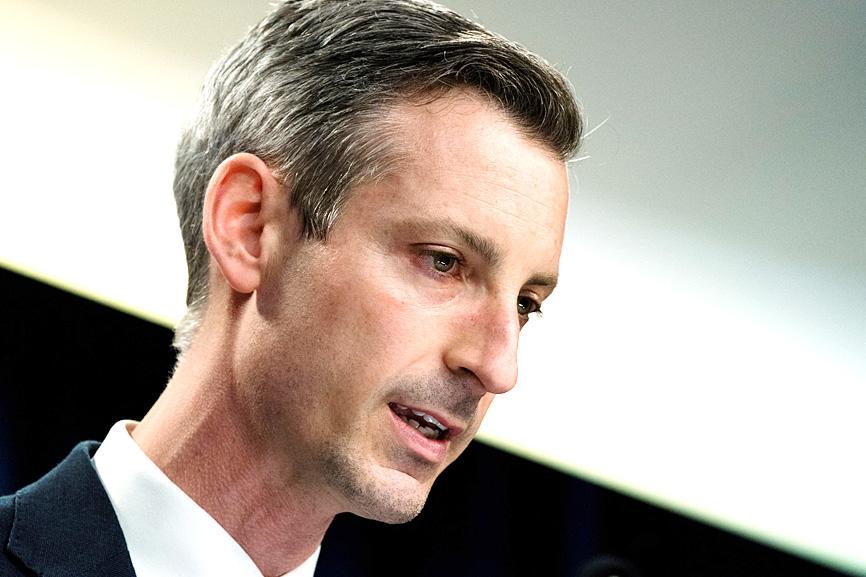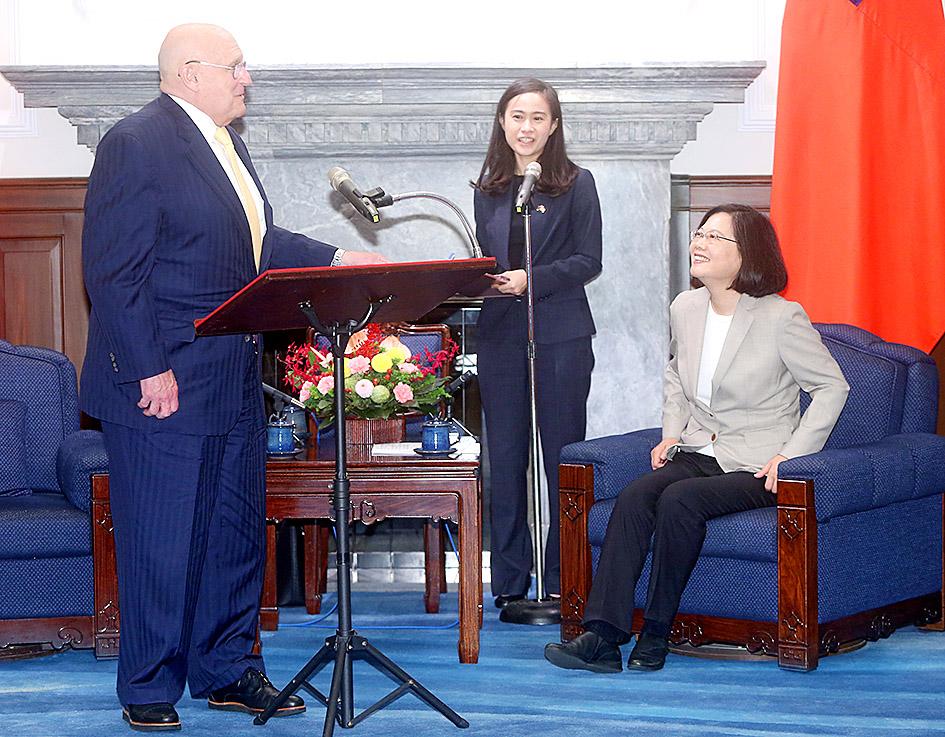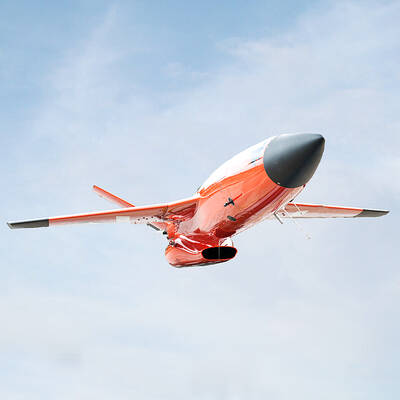Washington on Monday said that US members of Congress would continue to visit Taiwan, while condemning China for restarting live-fire exercises around Taiwan amid a visit to Taipei by US lawmakers, saying it was an “overreaction.”
China conducted drills in the sea and airspace around Taiwan on Monday while a five-member US delegation led by US Senator Ed Markey was in Taipei, near the end of their 21-hour visit.
As of 5pm, China had deployed 30 warplanes and five military vessels in areas around Taiwan, and 15 of the aircraft had crossed the median line of the Taiwan Strait, the Ministry of National Defense said.

Photo: Reuters
Asked about Beijing’s response to Markey’s visit at a news briefing, US Department of State spokesperson Ned Price said that any response to a peaceful visit “that entails bellicose rhetoric or military maneuvers or provocative actions is totally unnecessary and an absolute overreaction.”
Members of the US Congress have visited Taiwan for decades, with about 10 or more congressional delegations having visited Taiwan this year alone, and they would continue to do so, Price said, adding that the practice is in line with the US’ longstanding “one China” policy.
The US has taken measured and responsible steps in response to Beijing’s maneuvers so as not to escalate the situation, Price said.

Photo: CNA
However, “we won’t be deterred from flying, from sailing, from operating in the region in accordance with international law,” he added.
US President Joe Biden on Friday directed the USS Ronald Reagan aircraft carrier, operating in the Philippines, to remain on station longer than planned, and announced that additional steps in support of Taiwan would be forthcoming, Price said.
The Ministry of Foreign Affairs yesterday said that 33 US members of Congress have visited Taiwan since last year, continuing what has been decades of US visits.
This year alone, Taiwan has welcomed 19 US lawmakers — eight senators and 11 representatives — in addition to the three senators and 11 representatives who visited last year, ministry spokeswoman Joanne Ou (歐江安) told a regular news briefing.
Meanwhile in Singapore, US Seventh Fleet Commander Vice Admiral Karl Thomas yesterday called China’s decision to fire missiles over Taiwan a “gorilla in the room” that must be challenged.
“It’s very important that we contest this type of thing,” Thomas told reporters. “If we just allow that to happen, and we don’t contest that, that’ll be the next norm.”
The Seventh Fleet is based in Japan and is a core part of Washington’s navy presence in the Pacific.
Thomas compared the threats against Taiwan to the South China Sea where Beijing spent years constructing military bases and facilities on a series of contested atolls, which it has denied doing.
“If you don’t challenge it ... all of a sudden it can become just like the islands in the South China Sea [that] have now become military outposts,” he said. “They now are full-functioning military outposts that have missiles on them, large runways, hangars, radars, listening posts.”
Speaking to Radio Free Asia on Monday, former US deputy secretary of state Richard Armitage said that Chinese President Xi Jinping (習近平) bears all responsibility for cross-strait crises.
Armitage, who visited Taiwan in April last year with an unofficial delegation sent by Biden, said that Xi has made many mistakes, including miscalculating the US’ support for Taiwan, supporting Russia in its war in Ukraine and its “zero COVID” strategy.
He is now facing economic and diplomatic fallout from these mistakes for which he must bear responsibility, challenging his bid to retain the presidency later this year, Armitage said.
Additional reporting by Lu Yi-hsuan

CROSS-STRAIT COLLABORATION: The new KMT chairwoman expressed interest in meeting the Chinese president from the start, but she’ll have to pay to get in Beijing allegedly agreed to let Chinese Nationalist Party (KMT) Chairwoman Cheng Li-wun (鄭麗文) meet with Chinese President Xi Jinping (習近平) around the Lunar New Year holiday next year on three conditions, including that the KMT block Taiwan’s arms purchases, a source said yesterday. Cheng has expressed interest in meeting Xi since she won the KMT’s chairmanship election in October. A source, speaking on condition of anonymity, said a consensus on a meeting was allegedly reached after two KMT vice chairmen visited China’s Taiwan Affairs Office Director Song Tao (宋濤) in China last month. Beijing allegedly gave the KMT three conditions it had to

STAYING ALERT: China this week deployed its largest maritime show of force to date in the region, prompting concern in Taipei and Tokyo, which Beijing has brushed off Deterring conflict over Taiwan is a priority, the White House said in its National Security Strategy published yesterday, which also called on Japan and South Korea to increase their defense spending to help protect the first island chain. Taiwan is strategically positioned between Northeast and Southeast Asia, and provides direct access to the second island chain, with one-third of global shipping passing through the South China Sea, the report said. Given the implications for the US economy, along with Taiwan’s dominance in semiconductors, “deterring a conflict over Taiwan, ideally by preserving military overmatch, is a priority,” it said. However, the strategy also reiterated

‘BALANCE OF POWER’: Hegseth said that the US did not want to ‘strangle’ China, but to ensure that none of Washington’s allies would be vulnerable to military aggression Washington has no intention of changing the “status quo” in the Taiwan Strait, US Secretary of Defense Pete Hegseth said on Saturday, adding that one of the US military’s main priorities is to deter China “through strength, not through confrontation.” Speaking at the annual Reagan National Defense Forum in Simi Valley, California, Hegseth outlined the US Department of Defense’s priorities under US President Donald Trump. “First, defending the US homeland and our hemisphere. Second, deterring China through strength, not confrontation. Third, increased burden sharing for us, allies and partners. And fourth, supercharging the US defense industrial base,” he said. US-China relations under

The Chien Feng IV (勁蜂, Mighty Hornet) loitering munition is on track to enter flight tests next month in connection with potential adoption by Taiwanese and US armed forces, a government source said yesterday. The kamikaze drone, which boasts a range of 1,000km, debuted at the Taipei Aerospace and Defense Technology Exhibition in September, the official said on condition of anonymity. The Chungshan Institute of Science and Technology and US-based Kratos Defense jointly developed the platform by leveraging the engine and airframe of the latter’s MQM-178 Firejet target drone, they said. The uncrewed aerial vehicle is designed to utilize an artificial intelligence computer